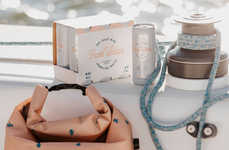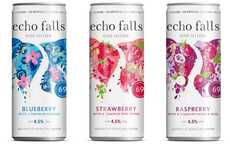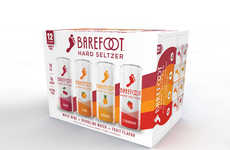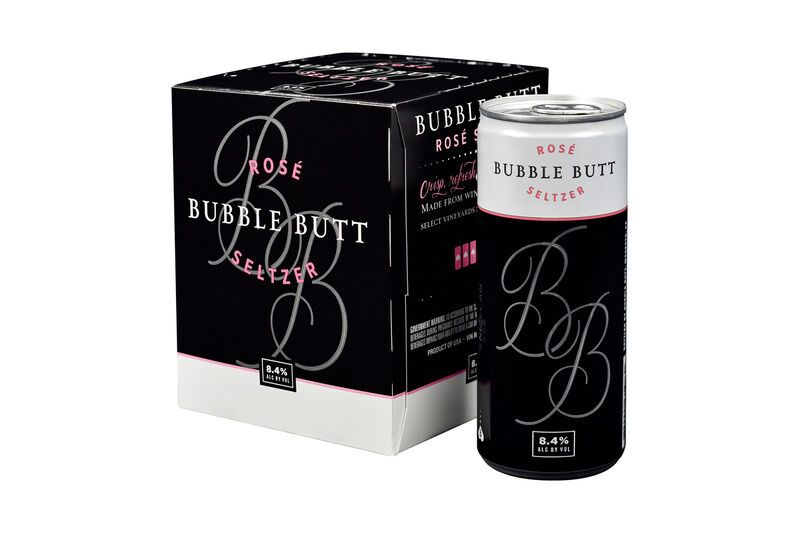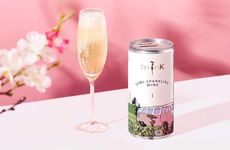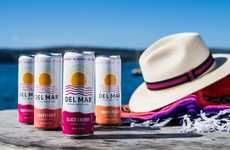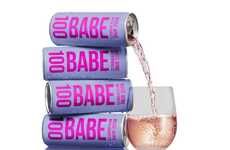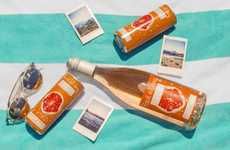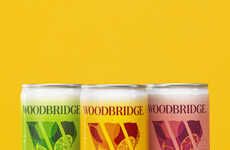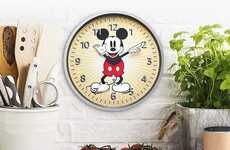
Bubble Butt Rosé Seltzer Has 8.4% Alcohol
Laura McQuarrie — October 13, 2020 — Lifestyle
References: WarRoomCellars & prnewswire
Bubble Butt Rosé Seltzer is made from classic California wine grapes that are harvested at low sugar levels and seltzer is added right before canning so that the sparkling product has a lowered 8.4% alcohol profile—which is still said to be "about double the average alcohol available within the competitive set of hard seltzers."
The new canned rosé wine seltzer from WarRoom Cellars taps into several demands across different categories, including rosé wine, sparkling wine and hard seltzer. As WarRoom Cellars Director of Sales, Evan Nelson, says: "we're canning it at super high carbonation levels, almost as much as Champagne." Yet the product is even easier to enjoy than champagne, as it's sold in packs of four and easy to open thanks to the conveniently canned format.
Image Credit: WarRoom Cellars
The new canned rosé wine seltzer from WarRoom Cellars taps into several demands across different categories, including rosé wine, sparkling wine and hard seltzer. As WarRoom Cellars Director of Sales, Evan Nelson, says: "we're canning it at super high carbonation levels, almost as much as Champagne." Yet the product is even easier to enjoy than champagne, as it's sold in packs of four and easy to open thanks to the conveniently canned format.
Image Credit: WarRoom Cellars
Trend Themes
1. Bubble Butt Rosé Seltzer - Disruptive innovation opportunity: Combining the popularity of rosé wine, sparkling wine, and hard seltzer in a convenient canned format with a lower alcohol content.
2. Canned Wine - Disruptive innovation opportunity: Meeting the rising demand for canned alcoholic beverages, providing convenience and portability for consumers on-the-go.
3. High Carbonation Products - Disruptive innovation opportunity: Creating products with high carbonation levels, appealing to consumers who seek a more effervescent and bubbly drinking experience.
Industry Implications
1. Alcoholic Beverage Industry - Disruptive innovation opportunity: Incorporating different alcoholic beverage categories (e.g., wine, sparkling wine, hard seltzer) into innovative products that cater to evolving consumer preferences.
2. Packaging Industry - Disruptive innovation opportunity: Developing innovative packaging solutions for alcoholic beverages, such as the use of cans, to enhance convenience, portability, and shelf-life.
3. Wine Industry - Disruptive innovation opportunity: Experimenting with new production methods and flavor profiles to create unique and appealing wine-based products that capture the interest of modern consumers.
2.7
Score
Popularity
Activity
Freshness


